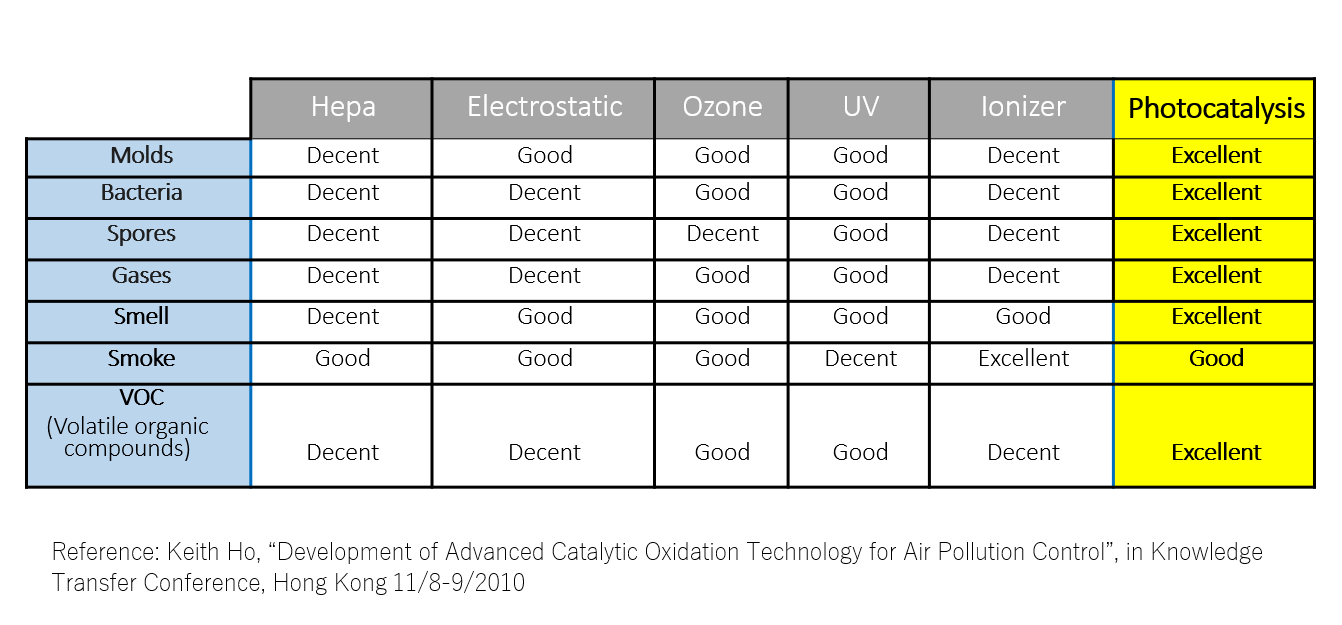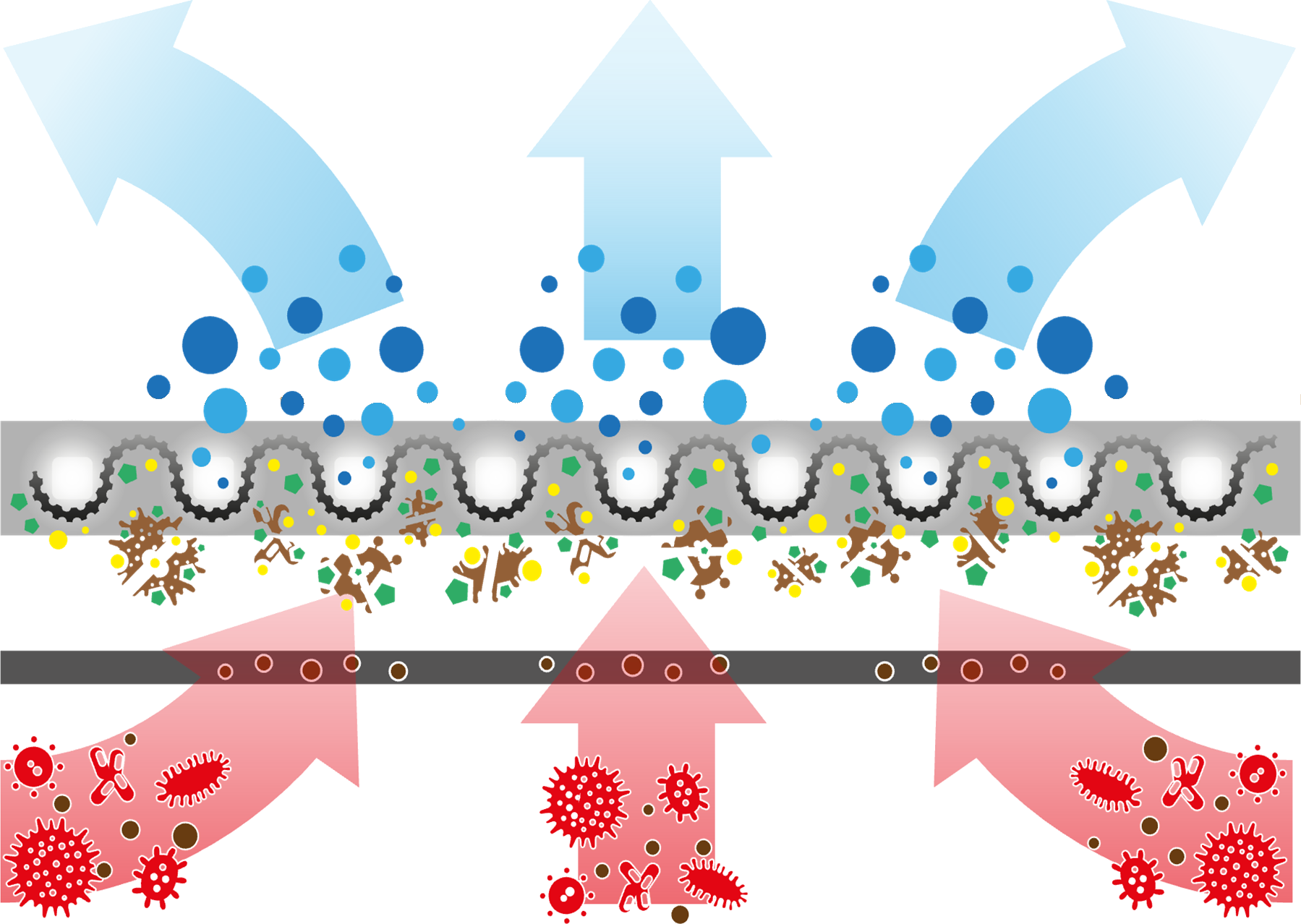Photocatalysis
Photocatalysis is the natural phenomenon in which a substance, called a photocatalyst, modifies the speed of a chemical reaction through the action of light (natural or artificial).
The main applications use photocatalysts based on titanium dioxide (TiO₂), which needs to be exposed to UV light to activate.

Billions of these highly oxidizing species are created in billionths of a second and work to break down matter at the molecular level.
The result is an effective decomposition of organic and inorganic pollutants (similar to all PM2.5 – PM10 particulate matter), microbes, viruses, nitrogen oxides, polycondensate aromatics, sulfur dioxide, carbon monoxide, formaldehyde, methanol, ethanol, benzene, ethylbenzene, nitrogen monoxide and dioxide, etc.
Microorganisms and Viruses
Although many studies have been reported on photocatalytic inactivation of bacteria, few studies have addressed virus inactivation.
It has been proven that photocatalysis can induce degradation in the case of simple compounds (proteins and DNA), an inhibitory effect in the case of viruses and bacteria, and an anticarcinogenic effect in the case of more complex cells, even with regard to pollen and spores that cause allergies.
The studies related to the transformation of viruses by photocatalysis have been performed in an aqueous or liquid environment or with a direct organism/surface contact method and we can speak of two levels of photocatalytic attack:
•PHOTOINACTIVATION or PHOTODEACTIVATION with the resulting DISINFECTANT effect
•DECOMPOSITION/KILLING of viral cells with resulting STERILIZING effect

The mechanism of virus inactivation by photocatalysis is still to be definitively clarified, although the effectiveness of the system has already been demonstrated with laboratory tests, using numerous types of microorganisms and having also quantified the almost complete result of the attack.
This appears to be initiated on the virus particles through their uptake on the catalyst surfaces followed by attack on the protein capsid and virus binding sites (direct redox attack).
According to other sources, the inactivation behavior of viruses is mediated by hydroxyl radicals •O₂- and OH• or also (and in addition) by Reactive Oxygen Species (ROS) such as •O₂ -, OH- H₂O •HO and free in the mass phase and not by those bound to the surface of the catalyst. The mechanism of subsequent decomposition involves the degradation of the cell wall and cytoplasmic membrane, again due to the production of reactive oxygen species (RO
The Solution proposed by FUEL
FUEL has developed some mechanical air treatment devices that allow the air of confined spaces to be treated with the use of a WO₃ and Pt-based photocatalyst.
In the development carried out by FUEL for air treatment, the study to obtain filters with the largest surface area in contact with the air and, for reasons of consumption and noise, a low resistance to the passage of air, was significant.

PHOTOCATALYTIC FILTER
Based on Tungsten Trioxide. Reached by light, it creates the photocatalysis reaction
DUST FILTER
Blocks dust particles
Devices have been developed for air sanitization in various contexts with treatment capacities from 50 to 500 m³/h, up to customized solutions for large volumes, with solutions that favor the diffusion of the system and with direct treatment in the environments subject to the intervention. This innovative patented photocatalytic technology makes it possible to clean, purify and significantly improve the quality of the air breathed in confined spaces where it remains for a long time.
FUEL devices do not emit any harmful substances into the air, and require little maintenance; It can be used continuously 24/7 as this technology is completely harmless to people and animals.

